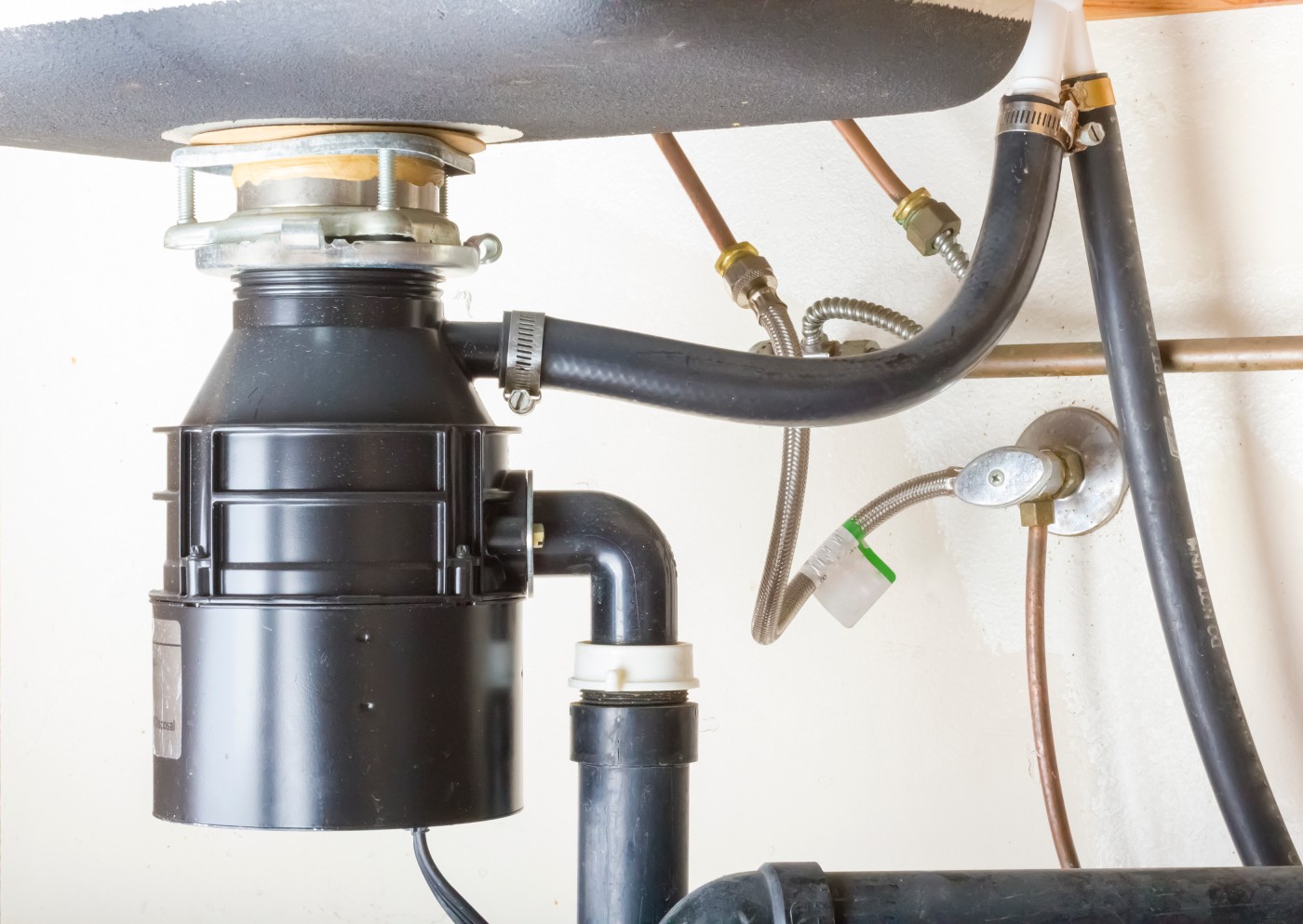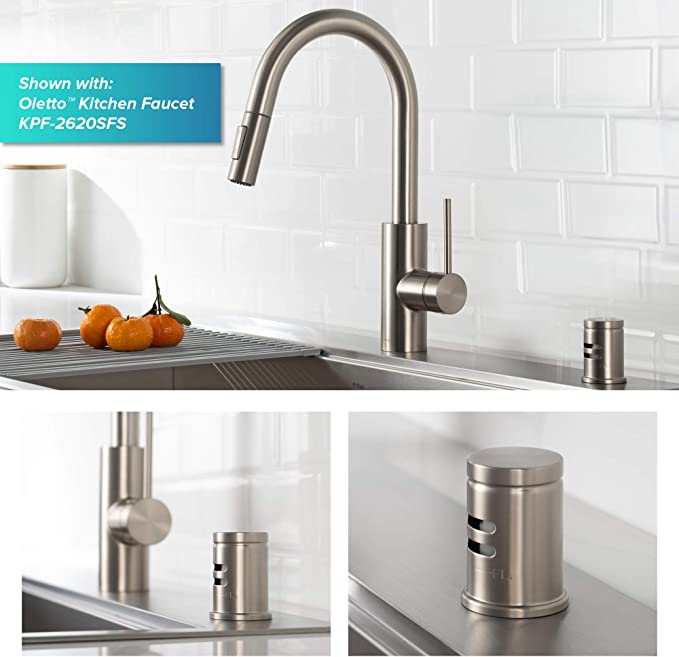
Benefits of Having Dishwasher Drain into Garbage Disposal
The main benefit for homeowners is that down the road maintenance costs are greatly reduced as they won't have to deal with clogs forming in their kitchen sink pipes. Connecting the dishwasher to the garbage disposal is the only way to be certain that all food waste being washed down the drain has been appropriately shredded and grinded down.
If the dishwasher is connected directly to the kitchen drain then food particle build-up is inevitable and can lead to symptoms such as a blocked drain, a drain with slow draining water, or even a drain with bad odors. If you have a garbage disposal, you should route the waste water hose to drain into the disposal unit rather than to the drain directly.

Most garbage disposals are actually designed to connect directly to the waste water tube from a dishwasher. This is done through the port / dishwasher inlet on the neck of the garbage disposal above the main waste water drain connection. You may need a dishwasher connection kit depending on your model of garbage disposal which will come with hose clamps to keep the connection secure.
If you decide to run the dishwasher hose to the garbage disposal, you should ensure that there is an air gap present. This can be done with an air gap connection (mandatory in some areas) or by routing the waste water house as high as possible (usually from the base of the dishwasher to under the counter). A dishwasher air gap is the small chrome or plastic piece that is fixed to the kitchen sink (now we know what that does). This air gap will ensure that any suction or siphoning force cannot draw dirty or waste water back into the dishwasher or from entering the fresh water supply.

If you do not have a garbage disposal then you can connect your dishwasher directly to your kitchen drain using a branch attachment - but you should select a dishwasher that has a hard food disposal - a sort of mini garbage disposal built into the dishwasher to help reduce the size of any food particles washed down the drain to prevent clogging. Most American models of dishwasher have a built in hard food disposal.
Things to Consider When connecting Dishwasher to Garbage Disposal
- Local regulations may require that you use an air gap to prevent contamination of your incoming drinking water. Check to see if you live in an area that requires an air gap. If you don't, you may instead use the "high hose loop method".
- Make sure your garbage disposal has a port to connect the waste water hose from your dishwasher. The port is usually located on the back of the disposal and may require that you remove a blanking plug to use it.
- If your dishwasher has a hard food disposal / built in food disposal, you should still route the waste water hose from the dishwasher to the garbage disposal. The garbage disposal in your sink will pulverize any solid food waste in to much smaller pieces than the small hard food disposal in your dishwasher.
Frequently Asked Questions
Do Different Brands of Garbage Disposal Have Different Ways Of Connecting To The Dishwasher?
Yes - many of the most popular brands have specialised dishwasher connection kits. Generic kits may work for most, but for peace of mind and reducing chances of having to return the item, you should ideally use a correct brand of connection kit.
Most new garbage disposals come with a garbage disposal connector - however if you don't have one, or need to replace your dishwasher to garbage disposal connector, here are the the best dishwasher connector kits for top garbage disposal brands:
- FASTEST AND EASIEST DISHWASHER DRAIN AND DISPOSAL CONNECTOR - The kit fits most models of household disposers regardless...
- 1 INLET CONNECTOR, 1 HOSE CLAMP, AND 3 SPRING CLAMPS - Everything you’ll need to connect your dishwasher drain to the...
- DURABLE CONNECTOR KIT - This DW-00 Dishwasher Connector Kit made by high-end materials, it’s more durable than the...
- CONNECT YOUR DISHWASHER: The InSinkErator Dishwasher Connector Kit is a fast and easy way to connect a dishwasher drain...
- HARDWARE INCLUDED: The kit includes an inlet connector, hose clamp, and 3 spring clamps—everything you need to connect...
- AMERICA'S #1 DISPOSER BRAND: There are more American-built InSinkErator garbage disposals in US homes than all other...
How to Install a New Dishwasher Without a Garbage Disposal?
If you do not have a garbage disposal and want to install a dishwasher alone, you need to make sure the waste water hose from the dishwasher should run down from the high loop (or air gap) and then connect to the sink drain with a branch fitting. The connection between the waste water hose and the branch fitting should be secured with a hose clamp to prevent leaks. Also note that the waste water house must be connected to the plumbing before the P or S trap of the kitchen sink - if not then odors from the sewer may make their way into your kitchen through the dishwasher.
Do I need to install an Air Gap with my Dishwasher?
You should - as air gap helps ensure that the dishwasher is vented properly and stops waste water from entering your dishwasher. If you do not have one then there is a possibility that the waste water may get siphoned back into the dishwasher. Depending on where you live, local regulations may actually require that an air gap is in present with any dishwasher installation, and they may require an air gap dishwasher connection or may allow the more simple high loop routing of the waste water hose. A high loop is simply routing the waste water hose of the dishwasher up to the underside of the kitchen counter before being connected to the garbage disposal or kitchen sink.
Do I Need A Garbage Disposal With A Dishwasher?
If your dishwasher model has a hard food disposal (most domestic models usually do) then you may hook up the dishwasher drain hose directly to your kitchen drain. It is advisable however to remove any large chunks of food waste before running the dishwasher as over time these bits of food may clog the sink. If you don't have a garbage disposal in your kitchen sink, you may wish to use a preventative solution such as Sani Sticks to help break down any food particles that are washed down the drain from your dishwasher.
Can I Use A Dishwasher With A Broken Garbage Disposal?
Yes, you can use a dishwasher if your garbage disposal is broken, but it would be best to remove as much food waste as possible before running the dishwasher to reduce the amount of food waste that will become trapped in your non-functioning disposal. It would also help if you ran your dishwasher on a higher temperature setting and use a quality dishwasher detergent to help break down the food particles before they are sent down the drain.
How To Plug a Dishwasher Drain on Garbage Disposal?
A dishwasher is connected to the garbage disposal by running the waste water hose of the dishwasher into the port on the neck of the garbage disposal. Each model of garbage disposal is different, so check the instructions online. In some cases you may have to remove a blanking plug to fit the dishwasher waste water hose correctly.
Last update on 2024-04-24 at 21:23 / Affiliate links / Images from Amazon Product Advertising API







I’ve installed a new sink that is quite deep and as a result the garbage disposal drain hole is too low in relation to the drain coming out of the wall and water is backing up into the sink. I have to run the garbage disposal to force the water into the drain. Are there any garbage disposals for deep sinks that has a drain outlet higher? Or is the only solution opening up the wall and lowering the cast iron drain pipe? One would think that with deeper sinks being more popular now that the garbage disposals would get shorter to accommodate existing plumbing.